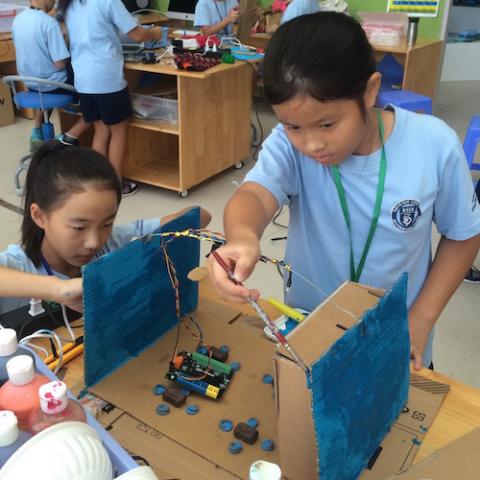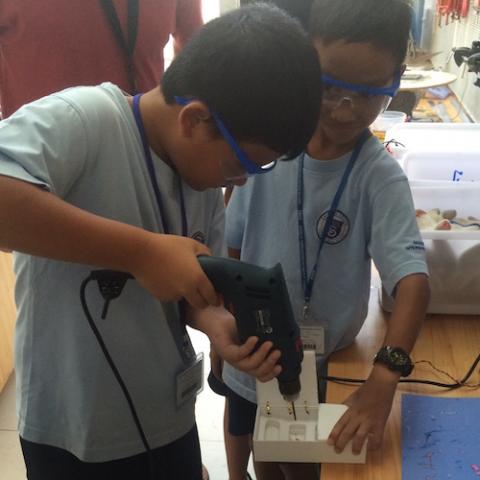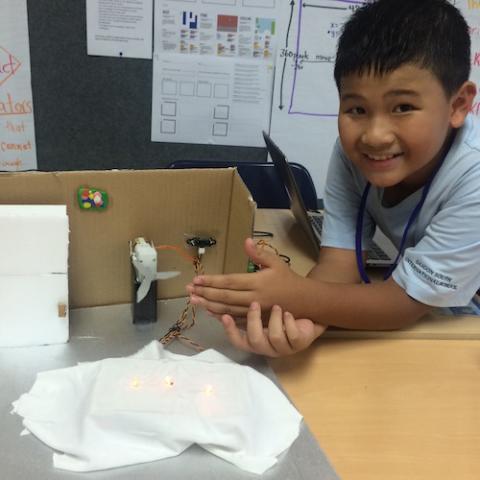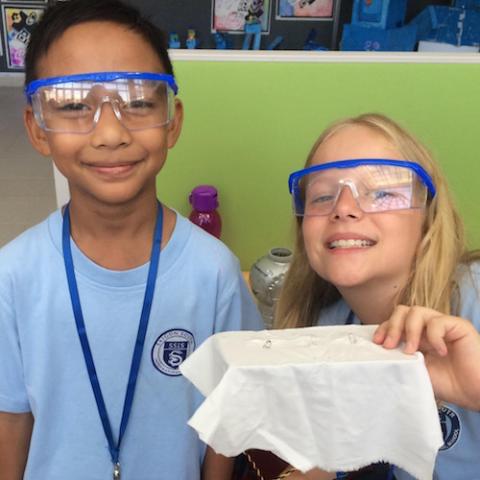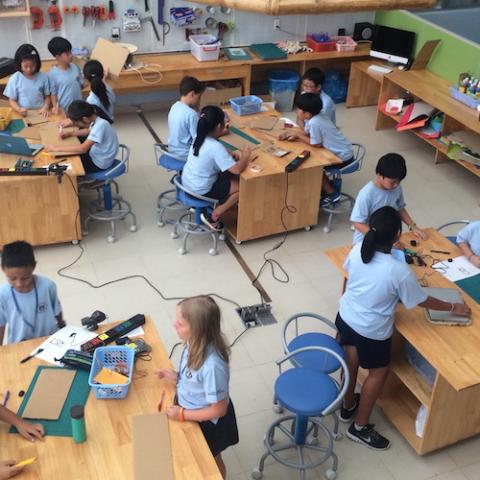Register to receive free access to all teacher materials.
Created By
This project was created by Alfredo Papaseit (Technology Coach) and Melanie Sylvester (Grade 4 Team Leader) of Saigon South International School.
Programming Language
Any language supported by Hummingbird Duo
Subjects
Science
Grades
4-5
Free Teacher Materials
Objective & Learning Goals
Students will:
- Investigate where energy is wasted in their own lives.
- Imagine possible solutions to this problem.
- Plan a prototype solution to this problem.
- Create a robotic prototype.
- Evaluate their prototype and make it better.
Standards
This project is aligned with a number of the Next Generation Science Standards for grades 4 (4-ESS3-1, 4-ESS3-2, 4-PS3-2, and 4-PS3-4). In addition, this project is aligned with the elementary engineering standards (3-5-ETS1-1, 3-5-ETS1-2, and 3-5-ETS1-3).
Photo Gallery
Lesson Procedures:
This project is designed for students who already had experience using the Hummingbird robotics kit, electronics, and Scratch. If this is not the case for your students, you will need to add some basic instruction about how to use the Hummingbird components.
For this project, students record their work in a design notebook (attached), which outlines the steps of the project.
- Introduce students to the problem: Vietnam is experiencing an energy crisis! Vietnam’s People’s Committee has met, and after hours and hours of research, have come to the conclusion that if Vietnam does not reduce energy consumption within the next year, there will be no way to produce electricity. They have called on the very intelligent Grade Four students of SSIS to develop innovative solutions that will help people save energy. There is not much time! Successful prototypes will be built and used. You will help to solve the energy crisis in Vietnam!
- Have students observe where energy is wasted and brainstorm possible solutions to a problem that they identify.
- Have students create a plan for their solution. This includes sketches, a list of materials, and a timeline. Students also create a plan for their Scratch program.
- Have students follow their plan to build their prototype.
- As students test their prototype, have them evaluate their results in their design notebook. They should also record changes that they make to improve the prototype.
- At the end of the project, have students reflect on their experience, including the challenges they experienced and how energy is transformed in their prototype.

